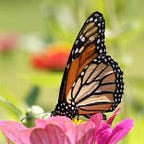FWS Behind the Lens: Tom Koerner
Tom Koerner grew up as a city kid in Lincoln, Nebraska. He would ride his bike for miles into the country, knocking on farmhouse doors asking for permission to go fishing in the families’ ponds. As the youngest of seven kids, Tom was given a lot of leeway and his parents’ rule was “be home by dark.”
As soon as Tom got his first car, he drove around rural Nebraska exploring all the public land he could find, fishing and hunting. When he was a junior in high school he drove his $500 Honda Civic to the Rainwater Basin of Nebraska one March weekend and had a million snow geese, mallards, pintails, and other waterfowl swirl around him and land in a wetland that had Waterfowl Production Area signs around its boundary. Immediately after that amazing experience, Tom began researching what a waterfowl production area was, who owned and managed it, and how to get a job with them. Tom graduated with a Bachelor’s of Science in Natural Resources Management from the University of Nebraska. He began work for Natural Resources Conservation Service implementing the first Conservation Reserve Program and contracts with private landowners.
“Watching those first native grass plantings go from weedy annuals (which makes great wildlife habitat), to mixed grass prairie grasses, then explode with wildlife where corn and soybeans had been, showed me that habitat is where it is at,” Tom shares.
He took a job in Western Wyoming with the Wyoming Game and Fish Department to start their private lands program working with private landowners on developing and managing habitats. This fantastic experience cemented in his mind that habitat is the key factor in wildlife populations, and much (most depending on the location) of that habitat is on private lands. Tom started working with the U. S. Fish and Wildlife Service at Devils Lake Wetland Management District (WMD), fulfilling his dream to work for the National Wildlife Refuge System, and never looked back.
What an awesome place, with wetlands and grasslands as far as the eye can see.
He was fortunate enough to spend time at Seedskadee National Wildlife Refuge (NWR) in Wyoming, Rainwater Basin WMD in Nebraska, Lacreek NWR and Sand Lake WMD in South Dakota, with all those locations having unbelievable habitat and fish and wildlife resources. His last 8 years have been spent as Project Leader for the Central Sage Steppe Complex, which includes Seedskadee, Cokeville Meadows, Arapaho, Hutton Lake, Mortenson, Bamforth, and Pathfinder NWRs, and Bear River Watershed and Wyoming Toad Conservation Areas. “Each of these locations and experiences over the last 32 years have been wonderful for so many reasons,” Tom explains.
The people he’s worked with, the landscapes, fish and wildlife have all shaped him and for that he is grateful. His favorite aspect of working on National Wildlife Refuges and Wetland Management Districts is the variety of work he gets to do, talking to school groups and visitors, visiting with private landowners about conservation easements or habitat projects, doing habitat management work such as prescribed burning, wetland management to benefit waterfowl and shorebirds, or reconstructing prairie on a soybean field.
“It is important work to me so that all of us can enrich our lives and enjoy fish and wildlife in wild places that continues into future generations.”
Tom has been taking photos since high school. He really started to get serious about sharing photos when his Dad could no longer get outdoors like he had been able to do most of his life. “Photography gets me out there and sharing photos with my dad each day allowed us to experience those adventures together.” It took a while for Tom to learn to be patient and quiet, letting wildlife come to him, but it’s amazing what starts to move around after they forget you are there. Photography forces him to watch the details and pay attention, to plants, animals, light, etc. all of which he believes makes him a better Refuge Manager.
You can view and download Tom Koerner’s images in the FWS Media Library here. Through this blog, the FWS National Digital Library aims to highlight different people in the field who have contributed spectacular photography, with an eye toward reflecting the full mission of the Service. Visit us at: images.fws.gov. Brought to you by the USFWS Conservation Library. #FWSBehindTheLens
